- Home
- Roxane Gay
Bad Feminist: Essays Page 7
Bad Feminist: Essays Read online
Page 7
At 2:30 in the morning, on the day of its release, Sweet Valley Confidential downloaded to my Kindle. I spent the next three hours reading. There wasn’t a page I turned, electronically speaking, where I didn’t think Girrrrrrrrrl, laugh aloud, or mutter “Mmmm.” Reading this book was a vocal and emotional experience. I went to work, and when I got home, I read Sweet Valley Confidential again. The book was, as you might imagine, terrible, an insult to the memory of the original Sweet Valley High series. As I read, I kept thinking, They could have called me. I work cheap. “They,” of course, have no idea who I am, but still, it hurt to know how many fans of Sweet Valley are out there, fans who could have written this book in the manner it deserved.
Sweet Valley Confidential makes you understand why so many people are lamenting the death of publishing. The book is bewildering. On a fundamental level, the writing is extremely bad. The world “appalling” comes to mind. The narrative structure is so deeply flawed it physically pained me. The story jumps from the present told in third person past tense to the past told in first person present tense. Sometimes the narrator changes from one twin to the next, and then other times the narrator is another, lesser character. I have spent more time than I care to admit trying to make sense of these authorial choices. Every so often, some sort of Web 2.0, social media reference is dropped into the narrative as if Pascal is saying, “Look, I’m still relevant! Twitter! Facebook! Oh my!”
The twins and their friends are all a decade older, but there is little evidence of any emotional maturity. You would expect that the twins, as women in their late twenties, would have sex lives, but most of the sex in the book is strangely antiseptic, eroticism from another room, as if the audience is still tween and teen girls. When you do see a bit of Elizabeth’s or Jessica’s sexual personas, it’s written so you can only cringe. Many of the petty grievances from high school linger, and most of the characters come off as the very worst people in the world. The whole enterprise has the feel of caricature. The twins have been written in such a way that makes you think Pascal (who created the series but didn’t write any of the original books) has no idea who the Wakefield twins are. Elizabeth and Jessica display behaviors so uncharacteristic that the simplest explanation is that Elizabeth and Jessica have both been lobotomized. I don’t want to give too much away, but throughout the novel, we’re supposed to feel sorry for Elizabeth. However, she is portrayed as such a self-indulgent, self-pitying sop of a woman you start to feel like she deserves her misery. Jessica, on the other hand, we’re supposed to hate, but she’s professionally successful and in a loving relationship and has a personality. She seems rational and interesting and as vibrant as ever. She makes mistakes but in a really human, endearing way. When you find yourself rooting for the person you’re supposed to hate because of the overall plot of the novel, the narrative has taken a drastically wrong turn. (For the record, TEAM JESSICA 4 EVA!)
One thing remains gloriously the same, though: the gratuitous descriptions of Elizabeth and Jessica’s beauty.
In Sweet Valley High 1: Double Love, the twins are described thusly:
With their shoulder-length blond hair, blue-green eyes, and perfect California tans, Elizabeth and Jessica were exact duplicates of one another, down to the tiny dimples in their left cheeks when they smiled. Each wore a gold lavaliere around her neck—matching presents from their parents on their sixteenth birthday last June.
Twenty-eight years later, in Sweet Valley Confidential, the twins look much the same, though their description has aged finely, like wine:
Like the twins of that poem, Elizabeth and Jessica Wakefield appeared interchangeable, if you considered only their faces.
And what faces they were.
Gorgeous. Absolutely amazing. The kind you couldn’t stop looking at. Their eyes were shades of aqua that danced in the light like shards of precious stones, oval and fringed with thick, light brown lashes long enough to cast a shadow on their cheeks. Their silky blond hair, the cascading kind, fell just below their shoulders. And to complete the perfection, their rosy lips looked as if they were penciled on. There wasn’t a thing wrong with their figures, either. It was as if billions of possibilities all fell together perfectly.
Twice.
When I first read the passage from Sweet Valley Confidential, I woke someone up with my laughter. I literally applauded because I was so thrilled by the exquisite badness.
To be fair, Sweet Valley Confidential could never have satisfied the expectations of those of us who fell in love with the original Sweet Valley High series. Like I said, nostalgia is powerful and that power builds with time; it often reshapes our memories. It’s not that the original Sweet Valley High books were the mark of great literature, but that to some preteen and teenage girls, the books were the most familiar and resonant expressions of our angst and our fondest wishes for ourselves, the girls we wanted to become. There is a young girl-heart still throbbing in many of us. Those of us who read Sweet Valley Confidential were looking to recapture some of the Sweet Valley magic from our youth.
Despite the book’s flaws, the magic was very much there for me. I easily embraced the drama, the absurdity, the wild implausibilities. You would not believe what’s going down in Sweet Valley and who has ended up with whom, but let me tell you, it’s all a delicious scandal. Someone’s gay! Someone betrayed her sister. Someone’s living in New York City. Someone got married to a wealthy but controlling man and lived in Europe until she escaped. Someone is engaged to be married and everyone’s talking. A guy we all thought was a prince of a man is really just a man. Someone has turned into a real bitch. Someone uses baking to sublimate her sorrow. Someone had cancer. Someone became a real asshole. Someone hasn’t changed one little bit. Someone got filthy rich. Someone got filthier rich. Someone died. Someone loves someone else in a tragic, unrequited way. Amidst all the drama, some things in Sweet Valley don’t change. There are many happy endings. As mindless, escapist entertainment, Sweet Valley Confidential delivers.
I was never going to become Miss America. I know that now. Vanessa Williams and her glittering teeth could only do so much. Nonetheless, I continue to have a very active fantasy life. In one of my more elaborate, embarrassing flights of fancy, I win an Oscar for writing the Best Adapted Screenplay based on my bestselling novel, which has graced the New York Times bestseller list for at least fifty-seven weeks. At the Oscar ceremony I am wearing something flawless by a designer with a long, exotic name. My hair and face are beat. I don’t trip when I walk up the stairs in my Louboutins to accept my honor. My date is my husband, who is the most handsome, famous movie star in the world. He is madly, uxoriously in love with me, and he beams as I stare into the audience. He will win Best Actor later in the evening because he starred in my movie. That’s how we met. In my acceptance speech, I thank my parents and my agents and my famous movie-star husband and my friends. I thank Francine Pascal for creating the land of Sweet Valley and Vanessa Williams for teaching me I could be beautiful. Then I call out the names of the golden, popular kids who never loved me. I raise my Oscar over my head with one hand, and I point my fingers at a camera with the other, once again like Miss Celie laying a curse on Mister. I say, “I once told you I was going to become Miss America. This isn’t the Miss America crown, but it’s pretty damn close.”
As a black girl, as a Haitian girl, I was not supposed to see myself in the Sweet Valley High books, but I did. Perhaps it was because I too lived in the suburbs, perhaps it was because I was looking for the way toward a perfect life and becoming Miss America, but I felt the Sweet Valley stories deeply. I read and reread the books countless times. The drama, recycled plots, and ludicrous circumstances spoke to me profoundly. This may also explain why in high school I become utterly devoted to Beverly Hills 90210, which took the Sweet Valley High formula and elevated it to high art. Sweet Valley Confidential reminded me of my most awkward years and the silly promise I made to a silly group of kids. The book reminded me of the solace, escape, and
quiet joy I found in Sweet Valley. Some experiences are universal. A girl is a girl whether she lives in West Omaha or Sweet Valley. Books are often far more than just books.
Garish, Glorious Spectacles
The green girl likes to watch herself suffer.
—KATE ZAMBRENO, Green Girl
In her groundbreaking book Gender Trouble, Judith Butler asserts that gender is a performance, an unstable identity that forms through how it is performed over and over. She writes,
Gender ought not to be construed as a stable identity or locus of agency from which various acts follow; rather, gender is an identity tenuously constituted in time, instituted in an exterior space through a stylized repetition of acts. The effect of gender is produced through the stylization of the body and, hence, must be understood as the mundane way in which bodily gestures, movements, and styles of various kinds constitute the illusion of an abiding gendered self.
While our conceptions of gender have evolved since the publication of Gender Trouble, there is a lot to be said for Butler’s theory, particularly when it comes to the ways in which women, knowingly or unknowingly, perform femininity and the ways in which women are sometimes trapped by how they are expected to perform their gender.
In popular culture, the world often feels like a stage on which women perform, and no novel in recent memory has captured this performance and how fraught it can be better than Kate Zambreno’s Green Girl.
The best word to describe Green Girl is “searing.” The novel is at once a compelling narrative about a young American woman living in London and an indictment of what ails our culture—rampant consumerism, shallow human connection, and, most of all, the cult of beauty and the unbearable and impossible constraints of gender—a culture where women wear their faces as masks, their bodies as shields. Throughout the novel, the green girl is as foolishly bold as she is vulnerable. She inhabits her contradictions in deeply seductive ways.
If, as Butler believes, gender is a performance, Green Girl is a novel about a young woman who is learning how to perform her femininity, who is learning the power of it, the fragility. Her education is, at times, painful. The green girl is as vicious as she is vulnerable, and Zambreno deftly exposes both this viciousness and vulnerability in her protagonist. Green Girl reveals the intimate awareness many women have about the ways they are on display when they move in public, about the ways they perform their roles as women: “The awareness on the train, the fashion show. The men are always looking, always looking with their flirty eyes. One can shop but does not have to buy. But sometimes life in the spotlight can be difficult. Sometimes she wants to be invisible.”
In Green Girl, Ruth is playing the part of girl. Her performance, at times, stands in place of her identity. As Ruth realizes, “Sometimes she is struck by the sense that she is someone else’s character, that she is saying someone else’s lines.” The green girl also does one thing and feels another because “the passivity of the green girl masquerades as politeness.” She wants to put her fist through a window but doesn’t because she knows that’s not what is expected of a green girl. She knows she is beautiful but does not necessarily feel her beauty inside. Throughout the novel, these tensions are brightly exposed over and over. At times, the novel makes it seem that to be a green girl is to be in a rather hopeless predicament.
Ruth is a shopgirl responsible for selling a perfume, Desire. She is always on display at work while also part of the scenery. One morning at work, she observes a group of teenage girls: “The girls slinking up the aisles have a rehearsed quality to them, their purses positioned just so on their shoulders, their eyes downcast yet somehow watchful. They cannot escape this self-awareness. They are playing the role of young girls, girls younger than Ruth.” There is an irony in Ruth’s observations. Throughout the novel, she plays the role of the young woman and her self-awareness (and, at times, self-loathing) is palpable and as inescapable as the self-awareness she sees in those teenage girls.
Zambreno demonstrates the self-absorption and vanity of the green girl, her insecurities, the mask(s) she wears, her conflicting desires. At times, Ruth wants to shield herself from the gaze of strangers. She closes in on herself, tries to occupy as little space as possible whether walking down the street or taking the tube. At other times, she wants to be seen, desired, loved. She is, at one point, willing to exploit herself to an unnamed former lover: “She prays to be preyed upon. She is a deer standing in the middle of the forest road, knees buckling, begging for a predator.” Ruth, like so many of us, wants everything, all at once.
Though this is a novel about women, there are, indeed, men in Green Girl: the man at work Ruth longs for, the brutal former lover she longs for, the seemingly platonic lover she yearns for until they consummate their relationship at which point she longs for something else. Ruth has desires, but those desires seem largely removed, lacking in immediacy, and rarely do those desires come into sharp relief. When Ruth has sex, it is often in a detached manner, her partners rather incidental to the act, Ruth herself incidental to the act. Ruth has an assignation with a bartender in the supply room of the bar, her detachment finely honed. “She is the voyeur of herself,” Ruth observes. And later, when Ruth and the bartender are fucking, “she has seen it all before, as if in a dream. But she is not really there. Not really.”
In “The Laugh of the Medusa,” Hélène Cixous states, “Woman must put herself into the text—as into the world and into history—by her own movement.” Green Girl is fascinating for the ways Zambreno puts woman into the text, physically and emotionally:
Ruth wants to escape. She wants to escape outside of herself. Everywhere she goes she wants to confide: Do you know what it’s like not to be able to shake your own quality? She doesn’t want to be. She doesn’t want to live. She wants to lose herself, lose herself in the crowd. She is somehow numbed to the horrors of everyday. Images, other images haunt her brain. The violence of life, she observes blankly.
More than anything, Green Girl is relentless in what it reveals about the green girl and her inner life, the emptiness and loneliness, the naked violence of it, how she must swallow it “deep deep inside.” The novel makes it seem like there is a green girl inside all of us, as desperately fragile as she is resilient. The green girl is able to understand the damage she does to herself even if she does nothing to prevent it.
If Ruth is woman as green girl rising, Maria Wyeth in Joan Didion’s equally scorching Play It as It Lays is the green girl as she falls, the green girl as she tires of playing the part of girl, the green girl as she decides to stop playing the part of girl because she no longer has any need (or, perhaps, desire) to do it. Even though Play It as It Lays was published in 1970, little has changed when it comes to woman as spectacle. Maria Wyeth is tormented and a bit tragic, but there is tenacity about her. The novel chronicles Maria’s descent into madness after having an abortion at the bidding of her estranged husband; her descent is more controlled than you might imagine.
Play It as It Lays reveals a complex web of relationships among Maria and her husband, Carter; their friends Helene and BZ; her lover, Les Goodwin; and her former lover, Ivan Costello, and it also discloses how these people break themselves against one another in rather terrible ways. There is also a young daughter, Kate, suffering from an unspecified condition and living at a facility away from home, a daughter Maria openly yearns for and who is the one person in the novel for whom she demonstrates genuine affection.
Like Ruth, the green girl, Maria, as a never-quite-model-and-actress, is always on display and aware of it, craving the attention as much as she despises it. Living in Hollywood, she is, like Ruth in the store where she works, just another part of the scenery of desperate and drugged women who, as Maria refers to her own beauty, “looked all right” and move through their lives playing the proper parts. Like Ruth, Maria is self-absorbed and selfish, but she has a stronger awareness of these flaws. She enjoys watching a movie she starred in because “the girl on the screen
seemed to have a definite knack for controlling her own destiny.” Just as Ruth often feels like she is someone else’s character, Maria, as an actress, has had opportunities to become someone else’s character to similar effect.
As a fading green girl, Maria remains detached. She loves her daughter and mourns her mother, but like with Ruth in Green Girl, she approaches most of her relationships clinically, with a bemused detachment. She rarely indicates a genuine interest in preserving her marriage and has little tolerance for the men in her life. When her lover, Les, leaves three messages, she asks her answering service to tell him she hasn’t picked up her messages because “she had nothing to say to any of them.” After she has an abortion, she meets Les Goodwin and he asks what’s wrong with her. She says, “I am just very very very tired of listening to you all.” What the people in her life label, throughout the novel, as insanity or selfishness reads quite clearly as weariness—a weariness of playing her part properly, of being on display, of being the ingenue and good green girl.
The literature of abortion is complex. Certainly, there are novels like Richard Brautigan’s The Abortion and John Irving’s Cider House Rules, among others. These literary treatments of abortion often struggle to strike the proper balance between narrative and political message. Didion’s treatment of the subject is far more nuanced—the message does not subsume the story. This is a story about abortion, but it is also a story about what happens to the green girl who changes but does not necessarily become any less powerless, empty, filled with longing.
During the procedure, Maria is dispassionate: “No moment more or less important than any other moment, all the same: the pain as the doctor scraped signified nothing beyond itself, no more constituted the pattern of her life than did the movie on television in the living room of this house in Encino.” It is only after, when she realizes she has, perhaps, done something she would rather not have, that the emotional significance begins to affect her, and even then, she does not seem to know what to do with those emotions so she dulls them through the liberal use of barbiturates.

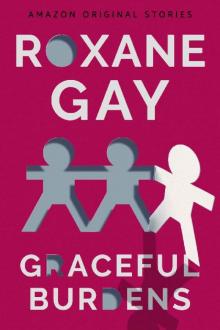 Graceful Burdens (Out of Line collection)
Graceful Burdens (Out of Line collection)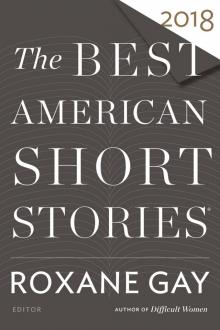 The Best American Short Stories 2018
The Best American Short Stories 2018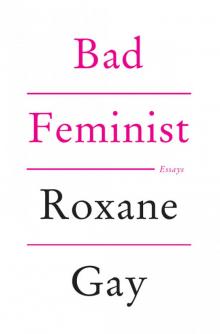 Bad Feminist
Bad Feminist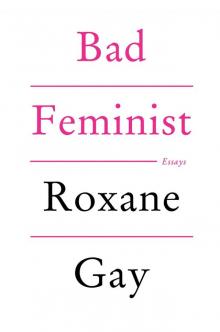 Bad Feminist: Essays
Bad Feminist: Essays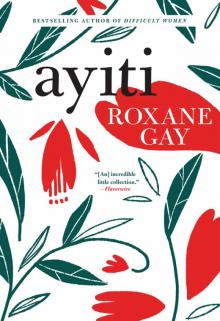 Ayiti
Ayiti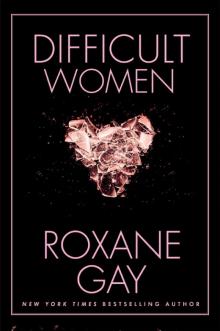 Difficult Women
Difficult Women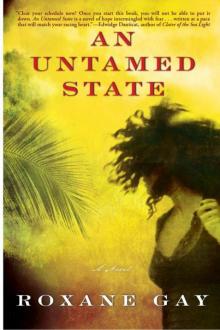 An Untamed State
An Untamed State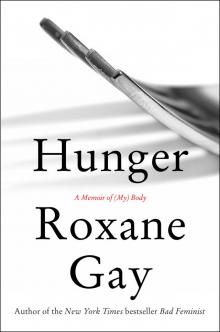 Hunger
Hunger